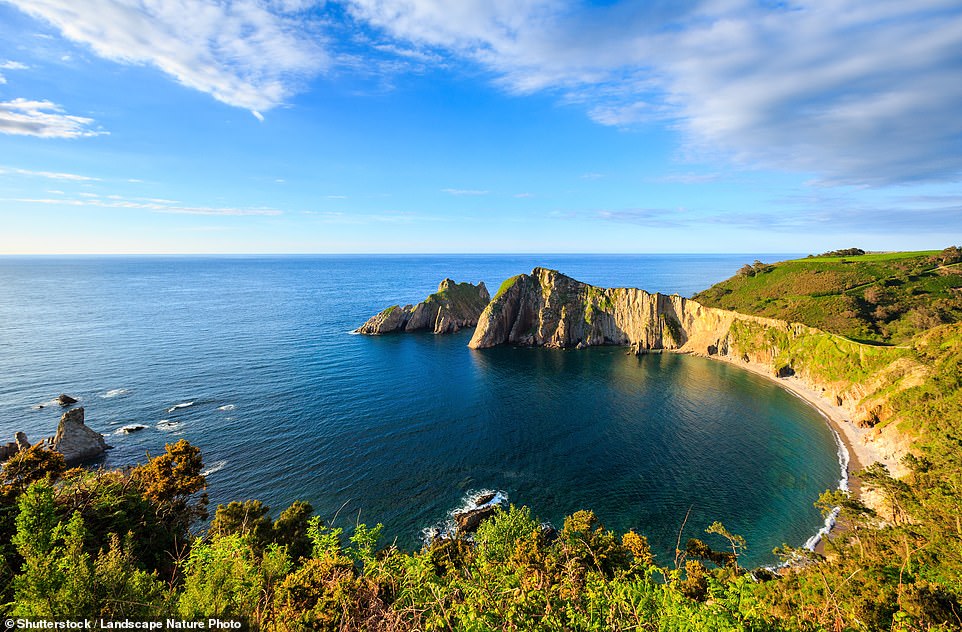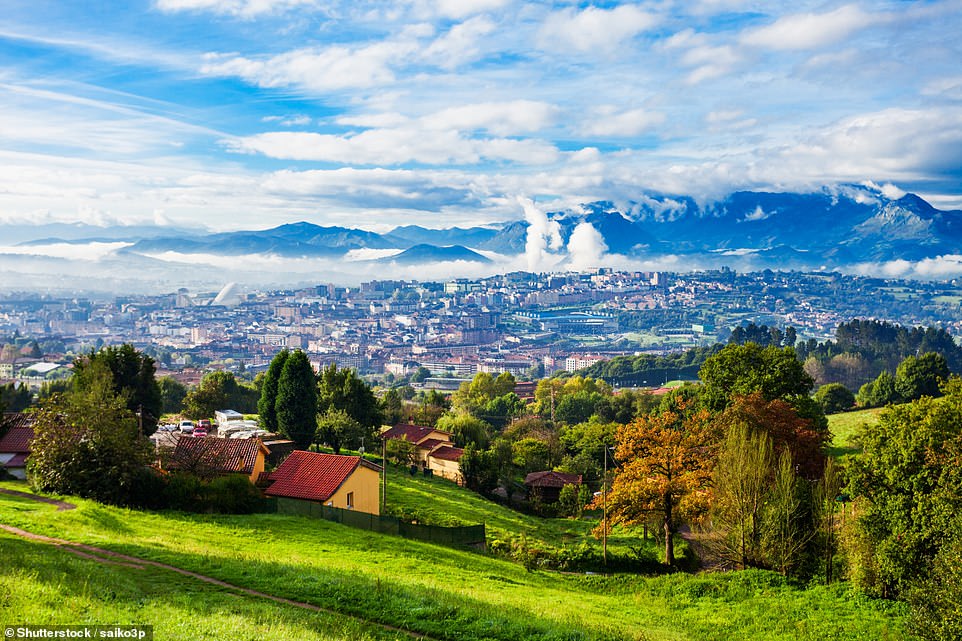Slowly, I feel my way through a pitch-black warren of limestone caves deep in the Picos de Europa, the mountain range famous for bears, wolves and eagles.
Then my nose alerts me to a different natural wonder: Cabrales, the world’s strongest and most expensive blue cheese.
So pungent it can make the most avid turophile wince. Cabrales owes its formidable taste and whiff to Penicillium roqueforti, a fungus that thrives in these cool, humid chambers.

Wild: Picos de Europa National Park. Wheels of Cabrales are matured in the mountain range’s limestone caves

Take in views of the glittering Bay of Biscay, pictured above, when hiking the pathways criss-crossing the Picos

Cabrales cheese, pictured, is the world’s strongest and most expensive blue cheese
Wheels of Cabrales are matured here for two-to-ten months. Spores that cling to the walls drift on air currents and imbue the cheese with the blue veins of mould that pack such a punch.
The caves wind for miles through a section of the Picos that straddles the upper edge of Asturias, the wedge-shaped principality known as The Land of Cheese, on the north coast of Spain.
Climbing the pathways that criss-cross the Picos is worth the effort; views across the pastures and forests to the glittering Bay of Biscay are spectacular.
For a small number of Cabrales producers this tough ascent is all in a day’s work because the highest cheese caves can’t be reached by vehicle.
Jessica López Fernández and her husband, Javier Diaz Bada, run the Quesería Main cheese factory and dairy. They mature their premium Reserve Cabrales in caves 5,000 ft up.
In summer, they use mules to cart the cheese up and down. In winter, when the snow is too deep, they lug 33 lb of Cabrales wheels each in backpacks on foot, and traipse up and down once a week to turn and clean them.
The round trip takes three hours and the best Cabrales is often produced in the highest caves.
It holds the record for the most expensive blue cheese in the world: in 2019, a Spanish restaurant paid £18,615 at auction for a 4.4 lb hunk.

A panoramic view of Oviedo, Asturias’s capital. While there, stop for dinner at a delightful sidreria (cider bar) on Calle Gascona

Sue recommends exploring the medieval streets of Oviedo, pictured, if you want to avoid Spain’s more crowded cities
Asturias thrives on authenticity. Wander the medieval streets and squares of Oviedo, the principality’s elegant capital, and you will avoid the hoards of the Costas and big cities.
Stop for dinner at a delightful sidrería (cider bar) on Calle Gascona, packed with locals eating fabada (white bean and meat stew) and chocopos (meat fillets stuffed, crumbed and deep fried).
The landscape offers endless possibilities for walking, climbing, canoeing and wildlife spotting. But for me it is all about the cheese: this small region produces more than 300 types and, thankfully, they export some to the UK too.
TRAVEL FACTS
Iberia (iberia.com) London to Oviedo from £117 return. Doubles at Gran Hotel Espana (granhotelespana.es/en) from £45 per night. Visit turismoasturias.es and quesosdecabrales.es.
Advertisement
Source link : https://www.dailymail.co.uk/travel/escape/article-10063877/Spain-holidays-Discovering-Asturias-home-worlds-strongest-cheese.html












